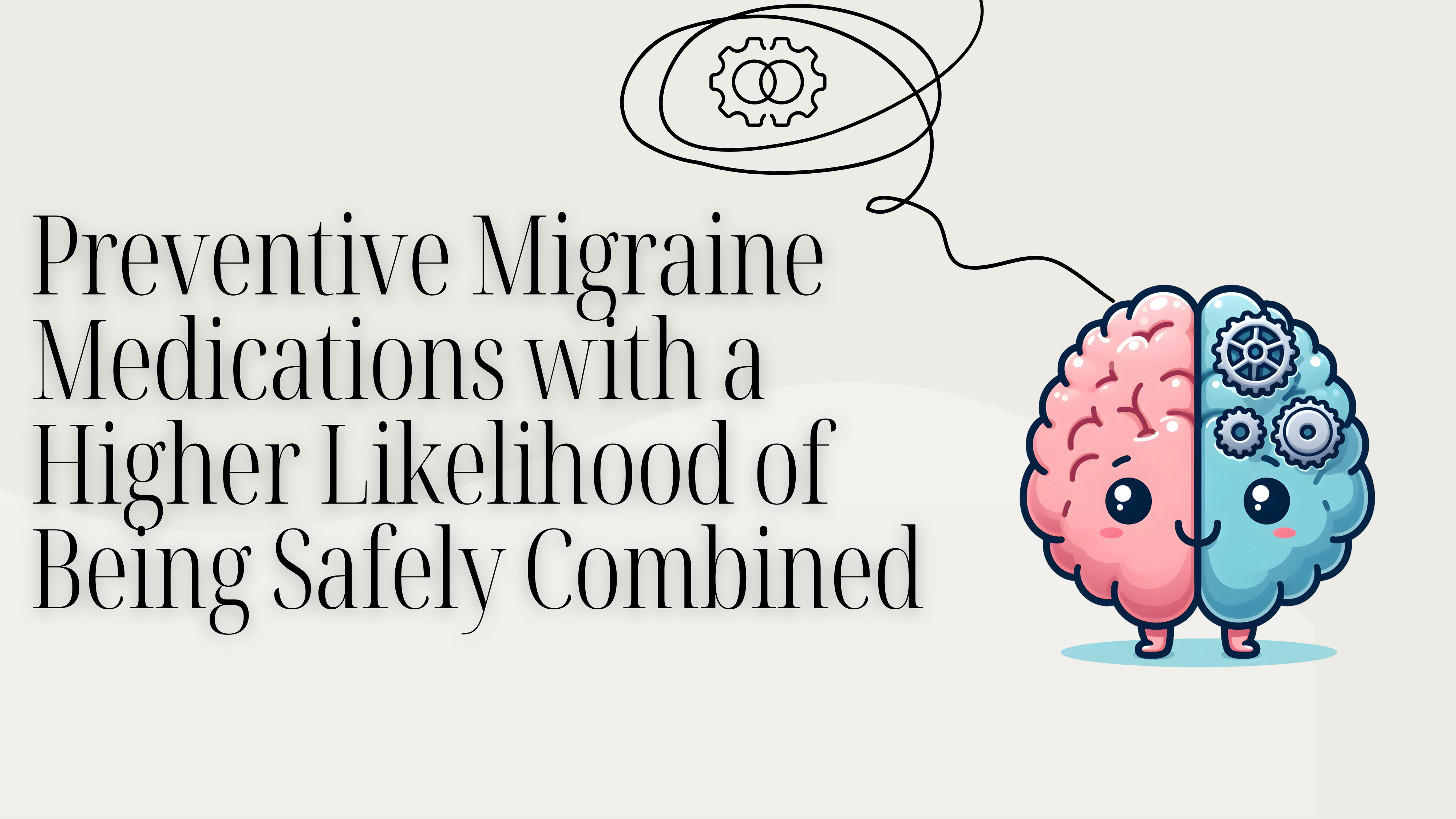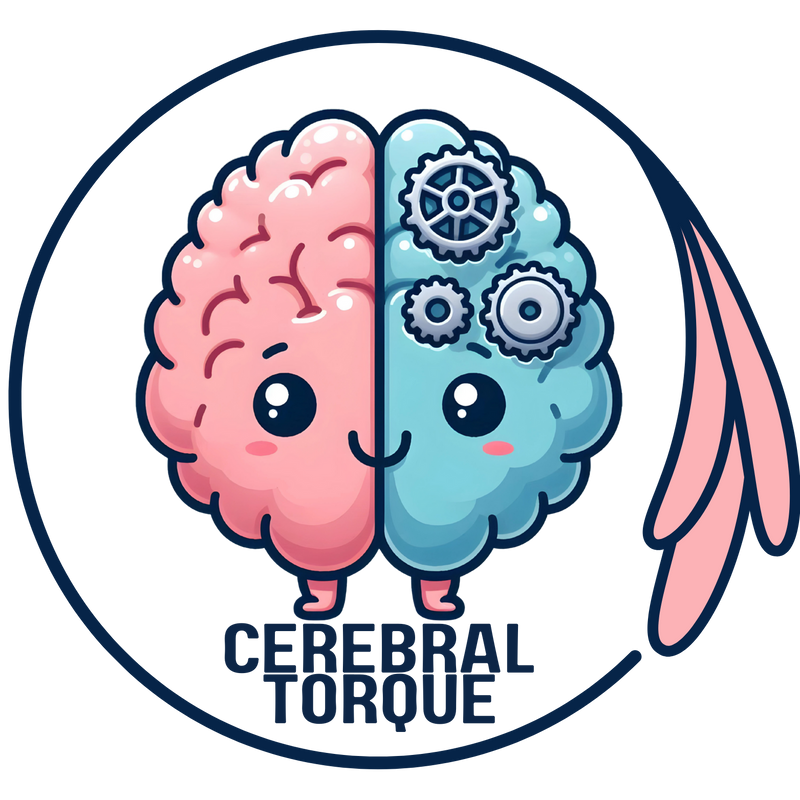Preventive Migraine Medications with a Higher Likelihood of Being Safely Combined
Posted on December 30 2024,

Understanding Drug Compatibility
Understanding how different migraine medications work together is important for effective treatment. This guide will break down which preventive medications have a higher likelihood of being safely combined.
What are "Inclusions" in Medication Compatibility?
An "inclusion" represents how many times a medication can be safely combined with other medications. Think of it as a compatibility score - the higher the number, the more flexible the medication is in combination therapy.
Example:
- A medication with 40 inclusions (like galcanezumab [Emgality]) can be safely combined with 40 different medication combinations
- A medication with 4 inclusions (like amitriptyline) can only be safely combined with 4 different medication combinations
High Compatibility Medications (30+ Inclusions)
| Medication | Inclusions | Why High Compatibility | Notes |
|---|---|---|---|
| Eptinezumab (CGRP mAb) | 40 | Breaks down into simple components | Acts outside blood-brain barrier |
| Fremanezumab (CGRP mAb) | 40 | Breaks down into simple components | Acts outside blood-brain barrier |
| Erenumab (CGRP mAb) | 40 | Breaks down into simple components | Acts outside blood-brain barrier |
| Galcanezumab (CGRP mAb) | 40 | Breaks down into simple components | Acts outside blood-brain barrier |
| OnabotulinumtoxinA | 37 | Local injection effects | Effects last about 3 months |
| Melatonin | 33 | Simple metabolism | Caution with opioids |
| Candesartan | 30 | Minimal liver processing | Mainly cleared unchanged |
Medium Compatibility Medications (15-29 Inclusions)
| Medication | Inclusions | Why Medium Compatibility | Notes |
|---|---|---|---|
| Cyproheptadine | 28 | Forms glucuronide conjugate | Antihistamine and antiserotonergic properties |
| Atenolol | 24 | 95% kidney, 5% liver | More compatible than other beta-blockers |
| Memantine | 22 | Multiple pathways | NMDA receptor antagonist |
| Lisinopril | 16 | Kidney elimination | ACE inhibitor |
| Metoprolol | 16 | Liver metabolism | Beta-blocker |
| Nadolol | 16 | Mixed elimination | Beta-blocker |
| Valproate | 16 | Liver metabolism | Multiple mechanisms |
Low Compatibility Medications (4-12 Inclusions)
| Medication | Inclusions | Why Low Compatibility | Notes |
|---|---|---|---|
| Nebivolol | 12 | Heavy liver metabolism | Interactions with CYP450 inducers |
| Carbamazepine | 8 | Enzyme inducer | Affects metabolism of many drugs |
| Propranolol | 8 | Extensive liver metabolism | Multiple CYP450 interactions |
| Timolol | 8 | Liver metabolism | Beta-blocker interactions |
| Topiramate | 8 | Complex metabolism | Multiple mechanism interactions |
| Amitriptyline | 4 | Multiple metabolic pathways | Anticholinergic effects |
| Clonidine | 4 | Alpha-2 agonist | Interacts with antidepressants |
| Frovatriptan | 4 | CYP1A2 metabolism | Interacts with CYP1A2 inhibitors |
| Guanfacine | 4 | CYP3A4 substrate | Sensitive to enzyme inhibitors/inducers |
| Pindolol | 4 | Non-selective binding | Multiple receptor interactions |
| Venlafaxine | 4 | CYP2D6 dependent | Requires conversion to desvenlafaxine |
| Zonisamide | 4 | Multiple mechanisms | Unique T-type calcium channel effects |
Understanding Medication Compatibility
Medications demonstrate higher compatibility when they possess certain characteristics in how they're processed by the body. Those with simple metabolism pathways tend to interact less with other medications. This is especially true for drugs that undergo minimal liver processing or are broken down into basic components. Medications that work locally, such as injectable treatments like Botox, also have fewer interactions because their effects are more limited.
Conversely, several factors can significantly reduce a medication's compatibility with other drugs. Medications that undergo complex liver metabolism have more interactions because they compete with other drugs for the same processing pathways. Those that either induce or inhibit enzyme activity can affect how other medications are metabolized. Furthermore, when multiple medications share the same metabolic pathways, they're more likely to interact with each other, potentially affecting their effectiveness or safety.
This understanding helps explain why newer medications like CGRP antagonists, which break down into simple components, and treatments with targeted mechanisms of action tend to have higher compatibility scores. It also explains why medications that heavily rely on liver processing or have multiple mechanisms of action typically have more limited combination options.
Source: Frontiers in Neurology - Drug Compatibility Research
View Full Research StudyAlways consult with your healthcare provider about medication combinations, as individual factors may affect compatibility.
Sun, Sep 14, 25
Neuroimaging Differences Between Migraine Types: Aura vs. Without Aura
Discover the latest neuroimaging research revealing key brain differences between migraine with aura and migraine without aura.
Read MoreThu, Sep 04, 25
Understanding Migraine Prodrome
Discover the migraine prodrome phase: 36 warning symptoms that occur 1-6 hours before headache onset. Learn timing patterns, predictive confidence levels, and new treatment approaches based on groundbreaking 2025 research...
Read MoreThu, Aug 07, 25
Dizziness and Migraine: When is it Vestibular Migraine?
Dizziness and migraine: Learn when dizziness is vestibular migraine vs BPPV, Meniere's disease, or vascular causes. Guide covers symptoms, diagnosis, cutaneous allodynia, and treatment options for recurrent dizziness episodes.
Read More


